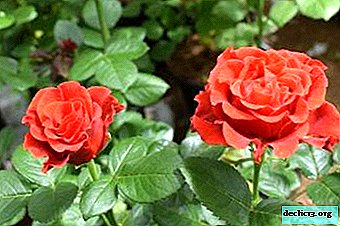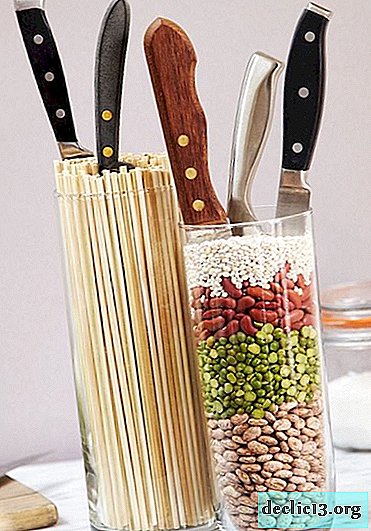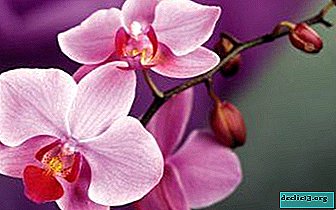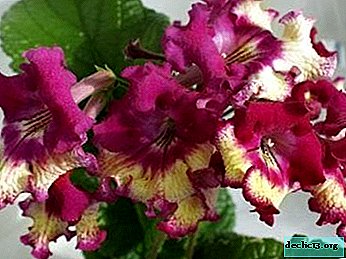Unusual houseplant Gasteria and its species: spotted, warty and others, as well as their photos
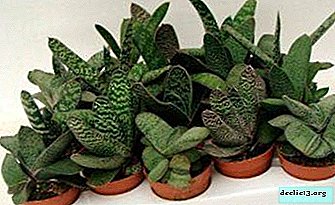
Gasteria is a succulent from the Asphodel family, which first appeared in the arid region of South Africa. It has special fabrics that store water.
Gasteria got its name because of the unusual swelling, which is located in the lower part of the perianth. This plant is an original form that resembles an amphora. It has many species, which will be discussed in this article.
Views with names and photos
Spotted

This species has a small stem, whose length reaches 30 cm. Its smooth leaves, trihedral in shape, grow in length from 16 to 20 cm, and their width is about 5 cm. A cartilaginous spike is located at the apex.
The surface of the leaves is strewn with barely noticeable various spots, which have an abstract position and shape. On the stem, they grow in a two-row way, while they have a spiral arrangement. In their shape they are quite dense and slightly convex.
The flowers of the spotted Gasteria are funnel-shaped and collected in a neat brush. They are painted in a bright red shade, and a green border is visible along the contour.
Care
This plant develops well in the shade and does not like direct sunlight. In the spring-summer period, a temperature of 18-22 degrees Celsius is favorable for him, and winter time, when he has a period of rest, the air temperature may well vary from 5 to 12 degrees, without posing a danger to the flower.
Spotted Gasteria needs regular wateringbut in winter, especially if the air temperature is below 12 degrees, watering should be carried out only with signs of drying out of the soil. Propagated by dividing daughter sockets or rooting cuttings.
We wrote more about caring for Gasteria at home in this article.
Warty

Warty Gasteria is the most popular species of this plant. The stem is absent, and its leaves are collected in a dense basal rosette in several rows. Foliage can reach a length of up to 20 cm. It has an elongated linguistic shape, which smoothly passes into a similarity to the tip at the very top. They are rough to the touch and covered with small white warts, from which the name of this species came from.
Its inflorescence is located in the bosom of the upper leaves and grows from 40 to 80 cm long. The flowers are cylindrical in shape, slightly swollen at the base, 2-2.5 cm long. They have a red or bright pink color.
Prerequisites for the flower
The optimum temperature for a warty Gasteria is 22-25 degrees C during the day, and at least 18 degrees at night. In winter, when air temperature drops, plant growth begins to slow down. When ventilating the premises, it is necessary to protect the plant from drafts.
The warty Gasteria easily tolerates the lack of watering, but in the spring and summer, when the growth period begins, watering the houseplant should be carried out regularly. The main thing is to carefully monitor that the soil, in between watering, has time to dry out a little.
The best propagation method for this type of plant is the division of daughter rosettes. It is necessary to transplant the plant once every several years.
Beilis

This is one of the most beautiful views of Gasteria, named after Roy Beilis (gasteria baylissiana). It is quite miniature and, growing, does not exceed 10 cm. Its leaves are very short, slightly curved. They are leathery to the touch, although the apex has a rather rough texture.
Basically, the color of the leaves varies between light gray and dark gray-green. In the spring-summer period, they acquire a slightly pinkish tint. The flowers are small, no more than 2 cm long, of a saturated red hue.
Content
This is a shade-tolerant plant that does not like direct sunlight. However, this view prefers bright, indirect lighting, especially in winter. The optimum air temperature in spring and summer should be at least 18 and no more than 25 degrees C. In the cold season, when the plant falls into a dormant state, the air temperature should be cool (about 7-12 degrees C).
From March to October, watering should be regular and plentiful, and limited in winter. You can propagate by seed or branch of the outlet sockets. It is necessary to transplant once every 2 years.
Saber

This is a stemless plant whose leaves grow in the form of a large rosette. A scattering of white dots and a bright glossy shine are visible on their surface.
It got its name because of the unusual shape of the leaves in the form of a saber, which have a ribbon-like arrangement and reach a length of about 30 cm. The flowers of the saber-shaped Gasteria have an original curved shape and are painted in bright red color.
How to care?
Gasteria saber-shaped, as well as other species, does not perceive direct sunlight, but needs bright lighting. The optimum temperature for this plant is considered to be 20-23 degrees C in the summer, and 6-12 degrees C in the cold season.
Watering should be moderate, and in winter time completely limited, as the flower falls into a dormant state.This species is best propagated using leafy cuttings. Watering planted cuttings is possible only after 3-4 weeks.
Tiny

Gasteria tiny is a miniature stemless plant. He has many shoots that come from the base. The leaves are an oblong plate with a pointed base. They have a dark green color and grow from 3 to 6 cm long. The surface of the leaves is glossy, decorated with small white spots.
The rosette of the plant reaches a diameter of not more than 10 cm, and at its base a lot of shoots grow. The flowers are attractive in shape, but rather small. The bottom of the flowers is gently pink, and the top is green.
How to contain?
Like the previous species, the tiny Gasteria is quite unpretentious in care. It must be kept in the shade in the summer, avoiding sunlight. The optimum temperature for this plant is 18-25 degrees C.
Watering should be done carefully, taking care not to fill the flower. In the summer, watering should be more plentiful. Gasteria tiny is well propagated by the separation of daughter outlets.
Armstrong

This is an extremely unusual miniature plant, which has short thick leaves, similar to tongues. They are quite stiff, with blunt tops. The length is not more than 3 cm, the surface is strewn with small warts.
The uniqueness of this plant lies in the fact that at first it grows strictly up. At a certain moment, it gradually begins to take a horizontal position. This species blooms quite quickly, and the flowers themselves are pink in color and are collected in a small brush.
Prerequisites for the plant
Gasteria Armstrong is easy to maintain and does not cause any problems. This flower needs a well-lit place, but on the condition that it does not get sunlight. Air temperature should vary from 18 to 25 degrees C.
Watering should be moderate so as not to flood the flower. In winter, watering should be limited at all, as the plant falls into a dormant state and stops growing. To propagate Armstrong's gastery, you can use seeds or separate daughter sockets.
Two-tone

Gasteria bicolor is a herbaceous perennial that reaches a height of up to 30 cm. Its leaves have a linguistic shape, and the length is in the range from 15 to 20 cm, while the width is not more than 5 cm.
Leaves grow vertically, but in different directions. They are painted in a deep dark green hue., and their surface is strewn with white spots on both sides. In young plants, the leaves are arranged in two rows, and adults are spiral.
What to look for?
Two-colored Gasteria differs little in leaving from other species. She needs bright lighting, while remaining in the shade of the sun.It should be watered carefully and sparingly, giving the soil time to dry out slightly between waterings. Air temperature should not exceed 25 degrees C and fall below 18. To propagate this species, it is best to resort to the division of rosettes or cuttings.
Conclusion
Many people consider this plant moody, but the experience of gardeners proves that this is not so. Gasteria is an amazing plant, the care of which will not be difficult if you follow all the recommendations (you will find out about caring for Gasteria here). It will be able to decorate any windowsill and for many years please with beautiful flowering.





